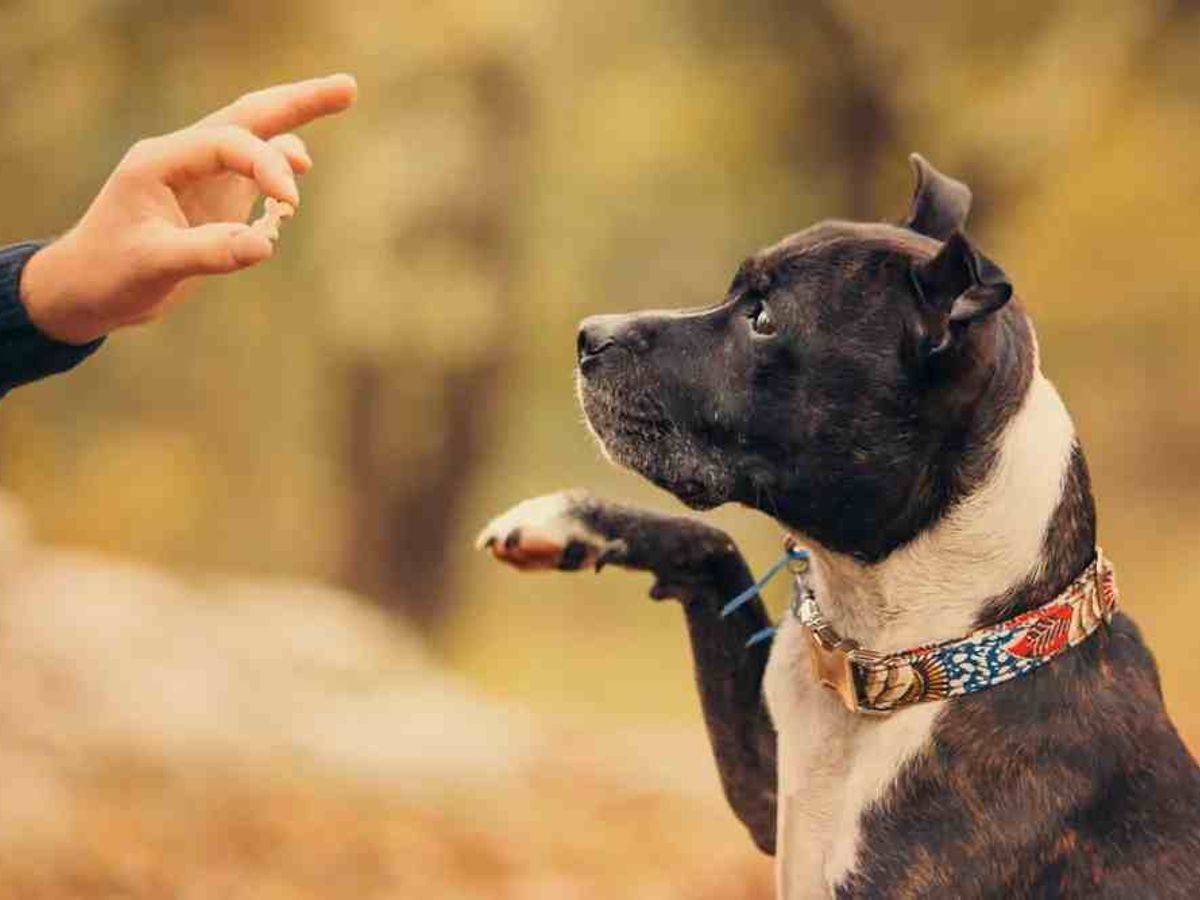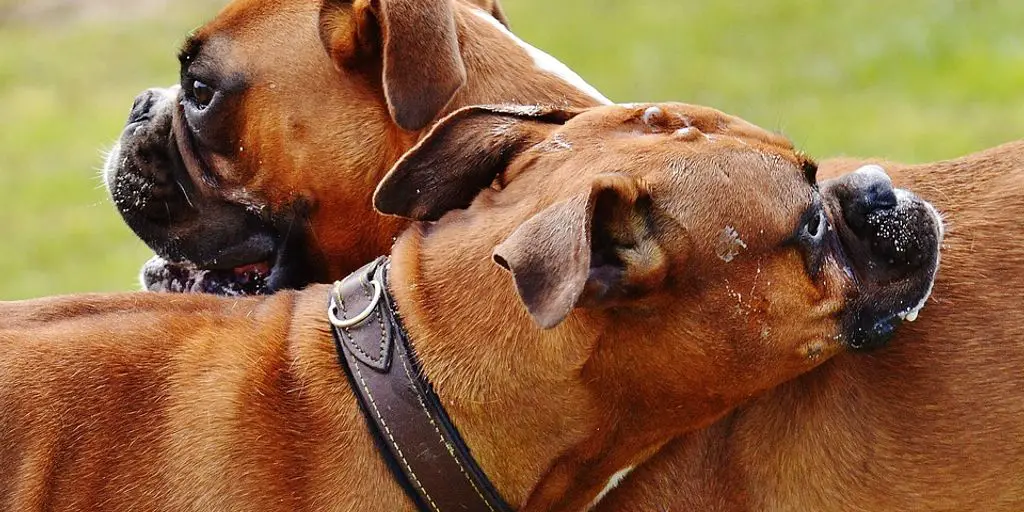House training an older dog can be a daunting task, but it is definitely achievable with the right approach and patience. Unlike puppies, older dogs may have ingrained habits that need to be changed, but they also have better bladder control and are more likely to understand commands. This guide will provide you with effective tips and techniques to successfully house train your older dog.
Key Takeaways
- Understand your older dog’s needs by recognizing signs, considering health issues, and adjusting to their routine.
- Set up a designated bathroom area and use consistent commands to make it comfortable for your dog.
- Establish a routine with a feeding schedule, regular bathroom breaks, and monitoring water intake.
- Use positive reinforcement techniques such as treats and praise, and avoid punishment.
- Seek professional help if you encounter persistent behavioral issues or need additional guidance.
Understanding Your Older Dog’s Needs
Training an older dog can be a rewarding experience, but it requires understanding their unique needs. Older dogs often have different requirements compared to younger pups, and recognizing these can make the training process smoother and more effective.
Setting Up a Designated Bathroom Area
Choosing the Right Spot
The first step to housetraining your adult dog is designating an area of your yard as the “bathroom,” where you consistently take your dog to eliminate. Choose a spot close to the door so your dog doesn’t have to go far if they’ve been holding it. Establishing this outdoor bathroom area is instrumental to the next steps.
Making It Comfortable
Make sure the designated bathroom area is comfortable for your dog. This means it should be free of any sharp objects or debris. You might also want to consider the weather; if it’s too hot or too cold, your dog might be reluctant to go. A little bit of shade or a sheltered area can make a big difference.
Using Consistent Commands
When you take your dog to the designated bathroom area, use the same command every time. This helps your dog understand what you expect from them. For example, you could say “Go potty” or “Do your business.” Consistency is key here, as it helps create a predictable pattern for your dog.
Encourage your dog to potty in the same area to create a predictable pattern. Remember when we said that dogs are inclined to use the bathroom in the same spot? This is exactly why consistency is so important.
Establishing a Routine
Establishing a routine is crucial when house training an older dog. It helps them understand what to expect and when, making the process smoother for both of you. Here are some key aspects to consider:
Feeding Schedule
“Free-feeding” your dog—allowing them to eat as much as they want, whenever they want—can throw off their bathroom routine and make it more difficult to keep track of their food intake. Instead, give your dog two meals a day and take them outside five to ten minutes later. Many dogs will need to relieve themselves soon after eating.
Regular Bathroom Breaks
Take your dog out once every hour when you’re home, giving them praise and treats for successful pottying. This frequent schedule helps reinforce the behavior you want to see. It’s best to start training over the weekend or when you know you’ll be home for a few subsequent days.
Monitoring Water Intake
Keep an eye on your dog’s water intake. Too much water can lead to more frequent bathroom breaks, which might be hard to manage initially. Try to offer water at set times during the day and take them out shortly after they drink.
Keeping a journal of all accidents, successful pottyings, and times taken out can help you see patterns and make adjustments as needed. This can also help you see that you’re making progress, even if it doesn’t quite feel like it.
By following these steps, you can establish a routine that makes house training your older dog much more manageable.
Positive Reinforcement Techniques
Positive reinforcement is a game-changer when it comes to training older dogs. Routine training using positive reinforcement can go a long way in ensuring your furry friend understands what you expect from them. Here are some techniques that have worked wonders for me.
Using Treats and Praise
When your dog does their business in the right spot, make sure to reward them immediately. This could be with their favorite treats or some enthusiastic praise. The key is to make them feel like they’ve done something amazing. I always keep a stash of high-value treats handy for these moments.
Avoiding Punishment
It’s crucial to avoid any form of punishment when your dog has an accident. Negative reactions can create fear and anxiety, making the training process even harder. Instead, focus on reinforcing the positive behaviors you want to see more of.
Consistency is Key
Consistency is the backbone of effective training. Make sure to use the same commands and rewards every time. This helps your dog understand what is expected of them and reduces confusion. Remember, patience and consistency will pay off in the long run.
Positive reinforcement not only helps in training but also strengthens the bond between you and your dog. It’s a win-win situation for both of you!
Dealing with Accidents
Accidents happen, and when they do, you’ll want to remain calm—even if your favorite rug is getting soaked. Fight the urge to scold or punish your dog. These reactions aren’t helpful because dogs often misunderstand why you’re angry. They may think you’re only mad because they pottied where you could see them and become afraid to pee or poop in front of you.
Cleaning Up Properly
When your dog messes in the house, stay calm and move swiftly. Don’t punish them for accidents you haven’t witnessed firsthand. Your dog won’t know why you’re punishing them and could become anxious in your presence. Simply clean up the mess and move on.
- Clean up accidents properly: The odor from past accidents is like a ‘restroom’ sign for your dog. Clean accidents thoroughly using a cleaner designed for pet stains, such as Nature’s Miracle Dog Stain and Odor Remover Spray. I recommend getting on your hands and knees and sniffing the area after you clean it to make sure the smell is truly gone.
Avoiding Negative Reactions
Most dogs, at some point, will have an accident in the house. You should expect this, as it’s a normal part of your dog’s adjustment to his new home. Fight the urge to scold or punish your dog. These reactions aren’t helpful because dogs often misunderstand why you’re angry. They may think you’re only mad because they pottied where you could see them and become afraid to pee or poop in front of you.
Understanding Common Triggers
Heck, if you have a guest come to stay with you, or construction on your street, or a change in your schedule, or a particularly bad stretch of weather, I would be extra careful at first to help ease the transition. Dogs do not always generalize that well, and change and stress can both “build up” and cause behaviors to deteriorate.
I’m really, really frustrated. I’m not sure I can deal with the peeing accidents anymore.
Crate Training for Older Dogs
Crate training an older dog can be a game-changer. Dogs don’t want to sleep near their waste, so a crate can help them learn to hold it until they get outside. This is especially true for breeds like Belgian Malinois and French Bulldogs, who are known for their intelligence and adaptability. However, it’s important to approach crate training with patience and consistency.
Choosing the Right Crate
When selecting a crate, make sure it’s the right size for your dog. They should be able to stand up, turn around, and lie down comfortably. For smaller breeds like Chihuahuas, a smaller crate will do, while larger breeds like a pitbull puppy will need more space. You can also consider crates that grow with your dog, which can be particularly useful.
Introducing the Crate
Start by making the crate a positive space. Place some of their favorite toys and a comfy blanket inside. You can even use a bit of canned dog food as a treat to entice them to enter. The goal is to make the crate a place they want to be, not a place they feel trapped.
Using the Crate Effectively
Use the crate when you can’t supervise your dog. This helps prevent accidents and teaches them to hold it until they can go outside. However, don’t leave them in the crate for too long. A good rule of thumb is no more than 4 hours at a time. Also, make sure your dog’s collar is removed to avoid any accidents inside the crate.
Crate training is not just about confinement; it’s about creating a safe space for your dog to relax and feel secure.
Remember, consistency is key. Whether you’re using a prong collar for training or small dog bark collars to manage excessive barking, the principles of crate training remain the same. Be patient, be consistent, and your older dog will adapt in no time.
Leash Training for Bathroom Breaks
Leash training your older dog for bathroom breaks can be a game-changer in your house training journey. Dogs are creatures of habit, and establishing a consistent routine with a leash can make the process smoother and more predictable. Here are some tips to get you started.
Benefits of Leash Training
Leash training isn’t just about control; it’s about communication and safety. Using a leash helps you guide your dog to the designated bathroom area, ensuring they understand where they need to go. Plus, it prevents them from wandering off and getting distracted. This is especially useful if you have a wireless dog fence or live in an area without a physical fence.
Step-by-Step Guide
- Choose the Right Equipment: Start with a comfortable collar or dog harness. Avoid using flea collars for this purpose as they are not designed for leash training.
- Set a Schedule: Take your dog outside on a leash about an hour or so after they eat or drink. Consistency is key in house training.
- Use Commands: Use simple, consistent commands like “go potty” to help them understand what you expect. Praise them excessively when they go in the right spot.
- Be Patient: Older dogs might take a bit longer to adjust, but with patience and consistency, they’ll get the hang of it.
Troubleshooting Common Issues
- Pulling on the Leash: If your dog pulls, stop walking and wait until they come back to you. Reward them when they do.
- Distractions: Keep the initial training sessions short and gradually increase the time as they get better at focusing.
- Accidents: If they have an accident inside, clean it up properly to avoid lingering smells that might attract them back to the same spot.
Remember, the goal is to make bathroom breaks a positive experience for your dog. With time and effort, leash training can become a seamless part of your house training routine.
Addressing Behavioral Issues
When it comes to managing behavioral changes in senior dogs, it’s essential to understand that they might be dealing with various underlying issues. Recognizing these issues early can make a significant difference in how effectively you can address them.
When to Seek Professional Help

Training an older dog can be a rewarding experience, but sometimes, despite our best efforts, we hit a wall. Recognizing when it’s time to seek professional help can make all the difference in your dog’s progress and your sanity.
Identifying When You Need Help
There are two main scenarios where you might be looking for help on how to potty train an older dog. The first is when you adopt an adult dog from a shelter or humane society, and the dog was not properly trained to begin with. The second is when your own dog is aging and suddenly struggling to pee or poop outside. If your dog was getting the hang of housetraining and then suddenly starts having accidents again, or if your dog doesn’t seem to understand potty training even though you’re being very consistent and careful, something may be medically wrong. Get a thorough veterinary checkup for your dog. It’s hard to learn to potty properly if you’re feeling sick or have an infection!
Finding a Qualified Trainer
Once you have a clear picture of any health issues and how to solve them, it’s time to consider seeking help from a professional dog trainer for the quickest path to success. Learning how to house train an older dog can be both more and less challenging than potty training a puppy. Older dogs who don’t have a history of house training have a strong habit of pottying wherever and whenever they want, so they can find it difficult to understand why the rules are suddenly changing.
What to Expect from Professional Training
Professional trainers can offer a structured plan and the expertise needed to address specific issues. They can help you understand your dog’s behavior and provide techniques tailored to your dog’s needs. This can be especially helpful if you’re really, really frustrated and not sure you can deal with the peeing accidents anymore. Take a deep breath. Take things slowly. If you put these steps into place, tomorrow will be better.
Maintaining Progress
Keeping Up the Routine
Maintaining a consistent routine is crucial for your older dog’s success. Dogs thrive on routine, and any deviation can cause confusion and setbacks. Stick to the same feeding, walking, and bathroom schedule every day. This consistency helps reinforce the training and makes it easier for your dog to understand what is expected of them.
Adapting to Changes
Life is full of changes, and sometimes you need to adjust your dog’s routine. Whether it’s a new job, a move, or a change in family dynamics, it’s important to gradually introduce these changes to your dog. Start by making small adjustments and gradually increase them. This way, your dog can adapt without feeling overwhelmed.
Celebrating Successes
Don’t forget to celebrate the small victories! Every time your dog successfully follows the routine or adapts to a change, give them praise and a treat. This positive reinforcement will encourage them to keep up the good work. Keeping a journal of all accidents, successful pottyings, and times taken out can help you see that you’re making progress, even if it doesn’t quite feel like it.
Using Training Aids and Tools
Training an older dog can be a bit of a challenge, but using the right aids and tools can make a world of difference. Here are some of my go-to tools that have helped me along the way.
Conclusion
House training an older dog might seem like a daunting task, but with patience, consistency, and the right techniques, it’s totally achievable. Remember, older dogs can be just as eager to learn as puppies, and they often have better control and focus. Stick to a routine, use positive reinforcement, and don’t get discouraged by setbacks. Every dog is different, so find what works best for your furry friend. With time and effort, you’ll have a well-trained, happy companion who knows exactly where to do their business. Happy training!
Frequently Asked Questions
Can older dogs be house trained?
Yes, older dogs can be house trained. While it may take a bit more patience and consistency compared to training a puppy, older dogs are fully capable of learning where and when to go to the bathroom.
How long does it take to house train an older dog?
The time it takes to house train an older dog can vary depending on the dog’s previous habits and experiences. On average, it can take a few weeks to a few months of consistent training.
What are some common signs that my older dog needs to go to the bathroom?
Common signs include sniffing around, circling, whining, or heading towards the door. Paying attention to these signs can help you take your dog outside in time.
How often should I take my older dog outside for bathroom breaks?
Initially, you should take your older dog outside every couple of hours, as well as after meals, naps, and play sessions. As they become more reliable, you can gradually extend the time between breaks.
What should I do if my older dog has an accident in the house?
If your older dog has an accident, clean it up thoroughly to remove any scent markers. Avoid scolding your dog, as this can create anxiety. Instead, focus on reinforcing good behavior by praising and rewarding your dog when they go outside.
Can health issues affect house training in older dogs?
Yes, health issues such as urinary tract infections, incontinence, or cognitive dysfunction can affect house training. It’s important to consult a veterinarian to rule out any medical problems before starting a training regimen.
Is crate training effective for older dogs?
Yes, crate training can be effective for older dogs. It provides them with a safe and comfortable space and can help manage their bathroom habits. However, it’s important to introduce the crate gradually and ensure it is a positive experience for your dog.
When should I seek professional help for house training my older dog?
If you’ve been consistent with your training efforts and your older dog is still having frequent accidents, it may be time to seek help from a professional dog trainer. They can provide personalized guidance and strategies to address specific challenges.


